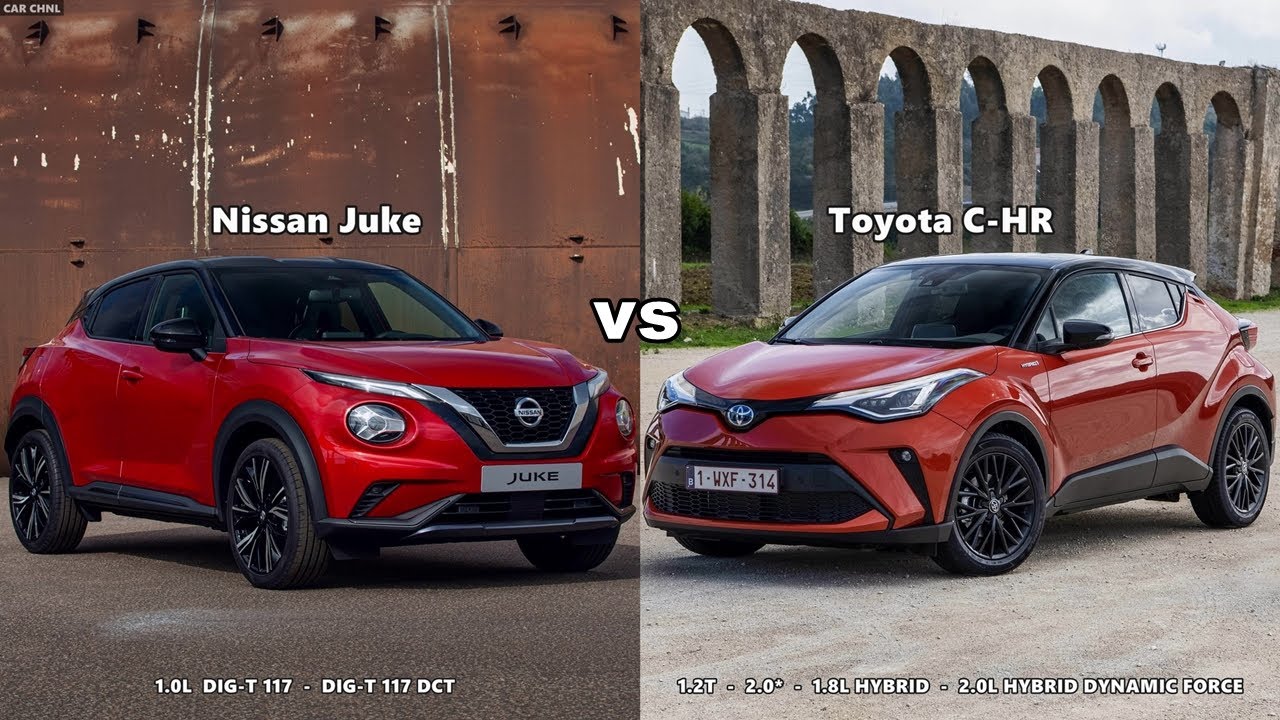
Nissan JUKE vs Toyota C-HR - Driving, Exterior and interior design
Nissan JUKE
The sporty JUKE is designed for agility, but the all-new coupe crossover has also grown up. Dimensions are now 4,210 mm length; 1,595 mm height; and a width of 1,800 mm for better roominess while remaining compact and lighter by 23 kg. Thanks to high strength steel, the new model features a more rigid platform that offers better stability, performance and cornering capabilities, and new levels of confidence and control.
The JUKE is powered by an efficient 1.0-liter three-cylinder DIG-T turbocharged petrol engine with 117 PS, giving drivers improved performance, fuel economy and refinement. Available with an engaging 6-speed manual or sporty 7-speed dual-clutch (DCT) paddleshift transmission, and a driving mode selector (Eco, Standard, Sport), drivers can effortlessly match their driving style to any driving scenario for maximum fun on the road.
Toyota C-HR
The new, 2020 Toyota C-HR offers customers an expanded, segment-unique powertrain range which features a second, 2.0 litre Hybrid Dynamic Force system positioned at the top of the range.
This fourth generation hybrid powerplant features a new 2.0 litre petrol unit from a completely new family of Toyota engines. Offering reduced internal losses and breakthrough engineering on volumetric efficiency, it develops 112 kW of power whist achieving a thermal efficiency of 41% - a combination of power versus efficiency that is unrivalled today in mass production.
Delivering 135 kW/184 hp, the new 2.0 litre hybrid powertrain combines superior dynamic performance with even greater
efficiency than the 1.8 system. An output of 50% more power, while the consumption only increases by 10%. It generates CO2 emissions as low as 118 g/km (WLTP) - a figure unrivalled within its segment - and returns combined fuel consumption of only 5.3 l/100 km.
The 90 kW/122 hp 1.8 hybrid powertrain is now equipped with a smaller, lighter and even more powerful lithium-ion battery pack. This is able to absorb and deliver more current, enhancing the electric motive force delivery. The system is even more natural to drive and maintains its emission standard at just 109 g/km (WLTP).
The 2020 Toyota C-HR is also available with a 1.2 litre turbo engine. Delivering 85 kW/116 hp and 185 Nm of torque, this unit generates CO2 emission of from 154 g/km (WLTP) and returns a combined fuel consumption of from 6.9 l/100 km (WLTP).
The 1.2 litre turbo may be mated to either a six-speed manual gearbox or a Continuously Variable Transmission. CVTequipped versions are available with either front- or all-wheel drive.
And finally, a 2-litre with 109 kW/148 hp, 189 Nm CVT-only model will be available for Eastern European markets.


![[試乗]砲連装、レアなバイクに乗る⑤ #アプリリア #Dorsoduro #トライアンフ #STREETTRIPlE #ドゥカティ #749R](https://www.fujijikou.jp/wp-content/uploads/2019/12/Dorsoduro-STREETTRIPlE-749R-150x150.jpg)





